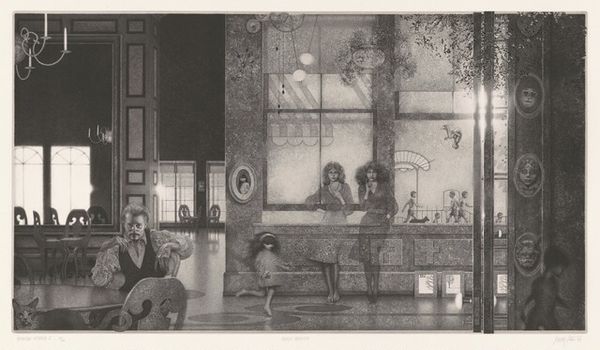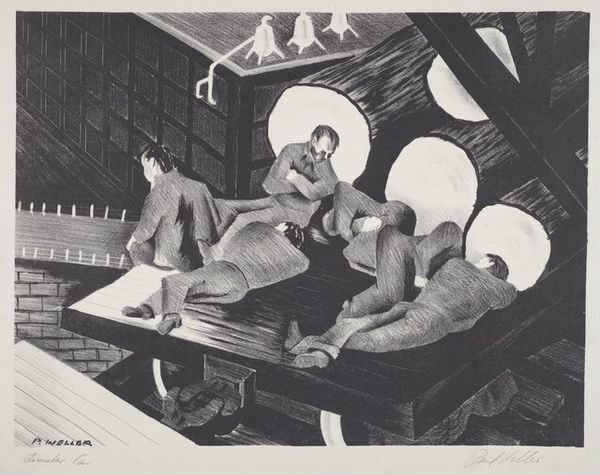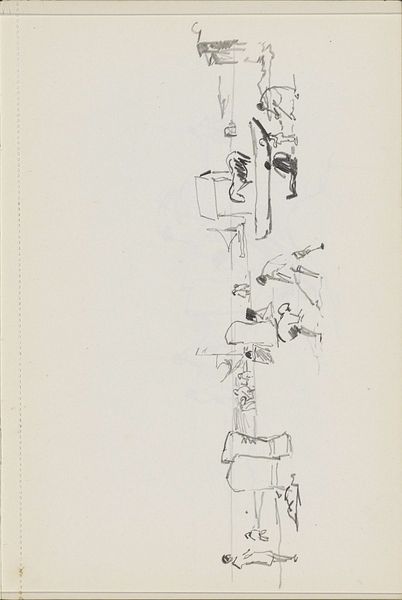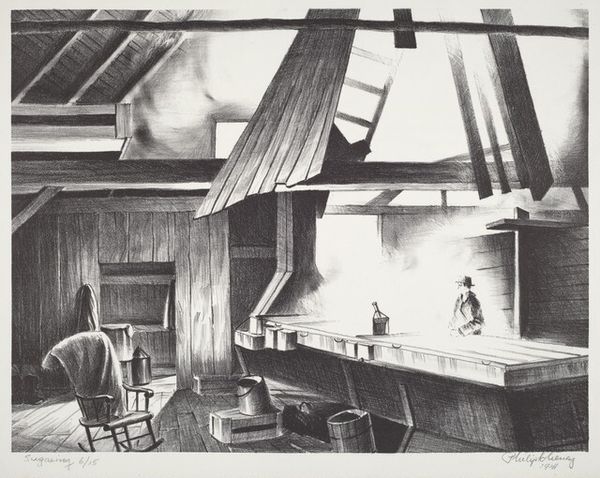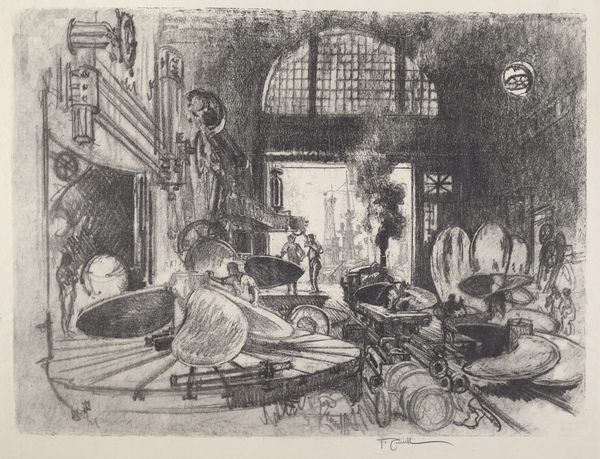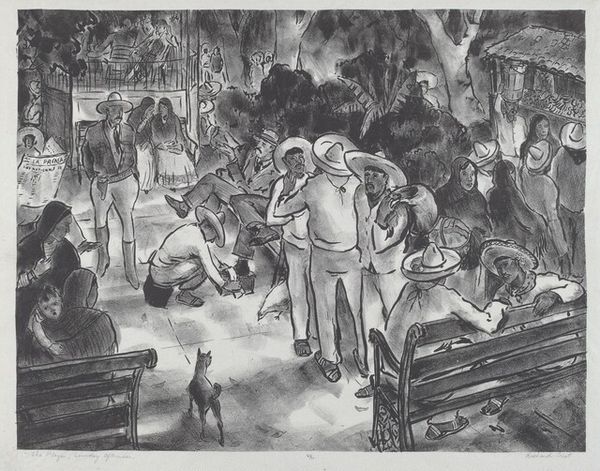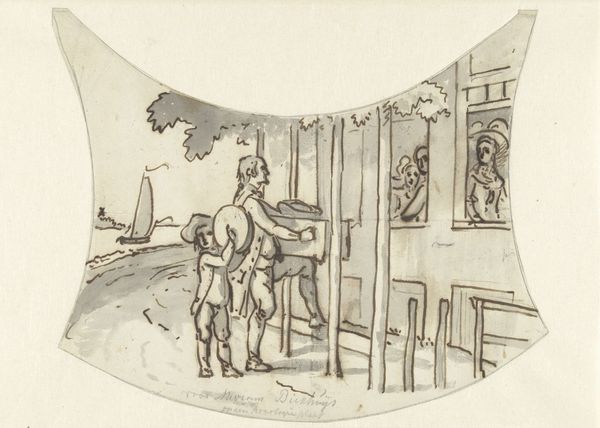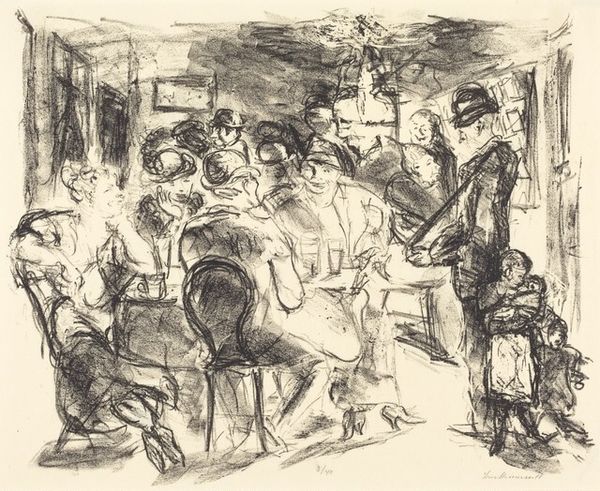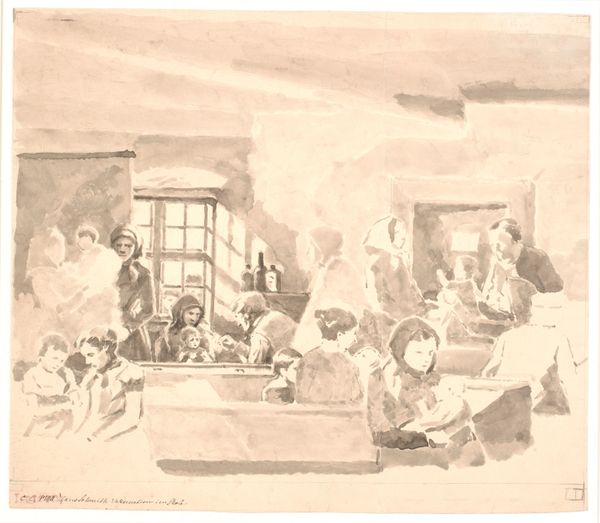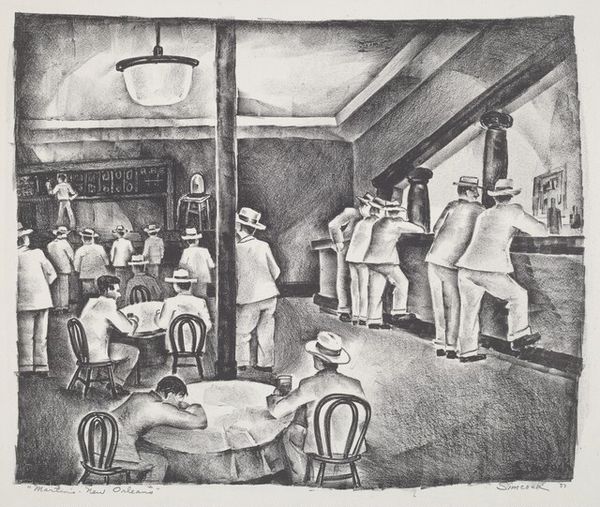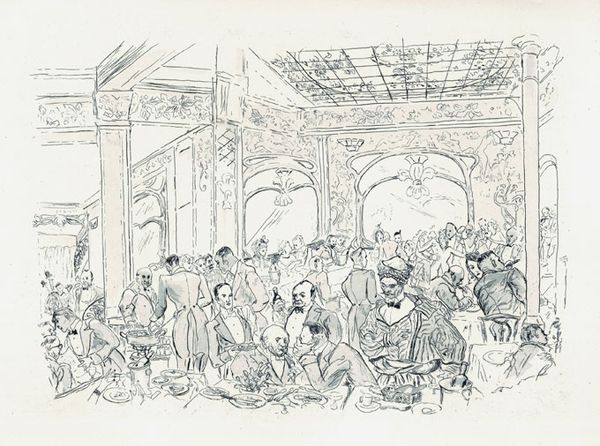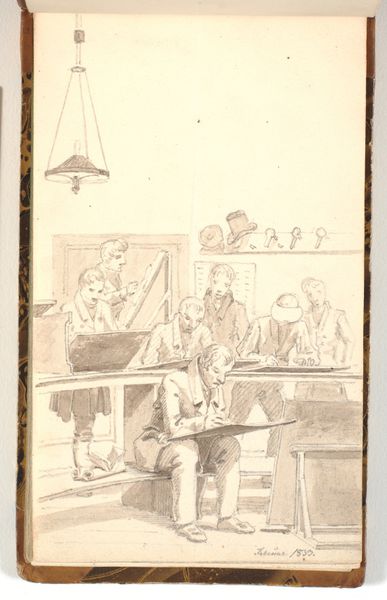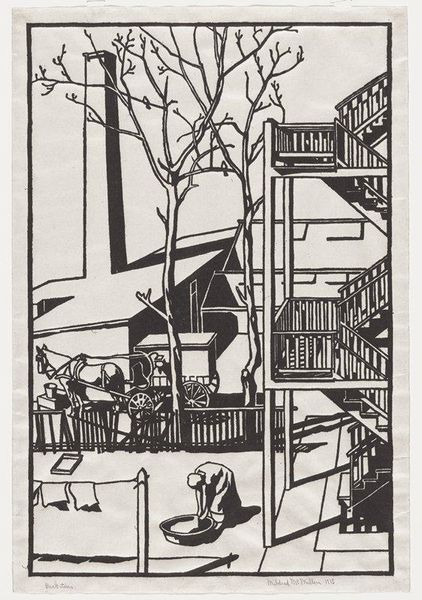
Dimensions: image: 23.18 × 32.39 cm (9 1/8 × 12 3/4 in.) sheet: 33.34 × 40.64 cm (13 1/8 × 16 in.)
Copyright: National Gallery of Art: CC0 1.0
Curator: The setting immediately strikes me—a juxtaposition of lush, organic forms with stark, artificial light. It feels like a liminal space, somewhere between a garden and a stage. Editor: You've intuited the essence perfectly! What we're looking at is Prentiss Taylor's "Feldman Quartet Rehearsing—National Gallery," a print made in 1967 using pen and ink. Notice how the artist uses such economical lines to create texture and depth. Curator: The composition's intriguing. Those heavy cello cases in the foreground…they're almost like sentinels guarding the fragile sounds about to emerge. And the way the musicians huddle, slightly blurred, in contrast to the sharper foliage. It creates a feeling of intense concentration within chaos. Editor: I'm drawn to the visual language at play. The formal, boxy lighting fixtures paired with the unruly growth behind... consider the period: the mid-60s, a time of great cultural shifts, clashing traditions, and burgeoning counter-culture movements. Taylor captures that tension brilliantly through symbols. Curator: It’s like he's saying the ordered structure of classical music – the quartet, the architecture – is fighting a losing battle against nature, against the changing times, or maybe simply against the ephemeral quality of music itself. The notes escape, fade…only the cellos remain, silent witnesses. Editor: Precisely! The cello often embodies melancholic sentiments, grounding deep emotion. Here, they may also represent permanence, standing guard as representations of something timeless against fleeting trends. The National Gallery functions as a cultural anchor where these musical gestures gain continued validation and significance. Curator: And those faces! Only hinted at, we are invited to imagine their immersion in the score, to speculate about the dynamic of the quartet – are they happy? Content? At war with the composer? The sketch teases you into a multitude of possible stories. Editor: That's the beauty of it. Taylor provides only a skeleton, trusting our individual experiences to breathe life into the work. Art becomes less about observation, more about personal encounter. Curator: Exactly, and as a viewer, it is really easy to dive in, you find yourself yearning to join this elusive serenade. Editor: I couldn't agree more. I suppose there’s a beautiful irony there, in how something so sparse manages to convey such density.
Comments
No comments
Be the first to comment and join the conversation on the ultimate creative platform.
